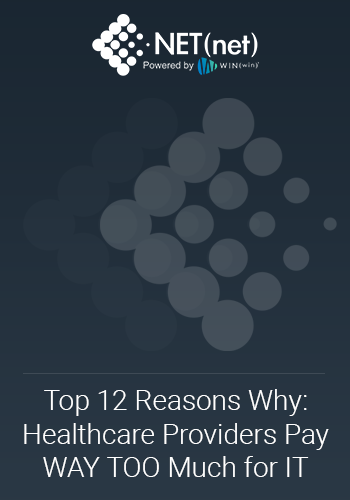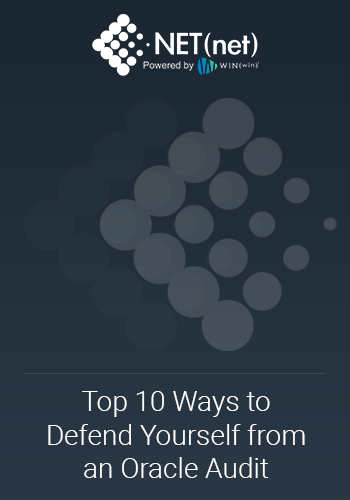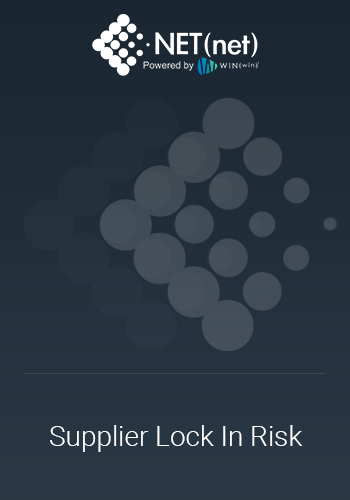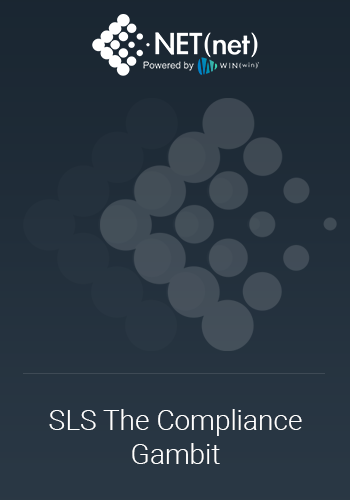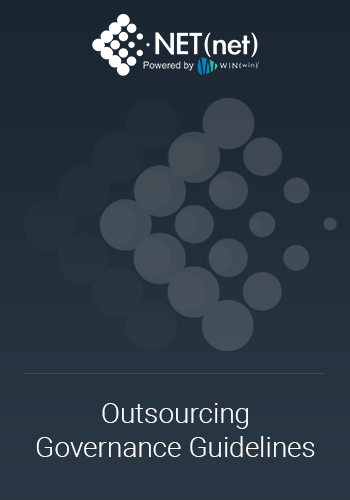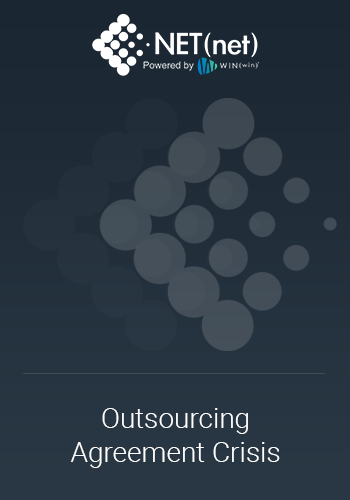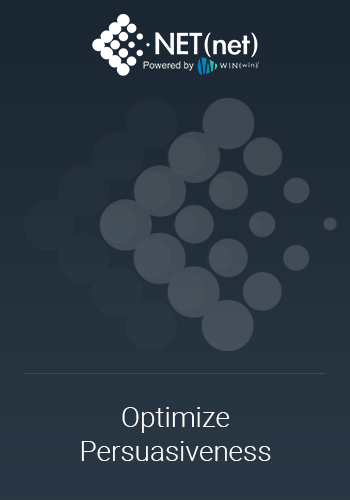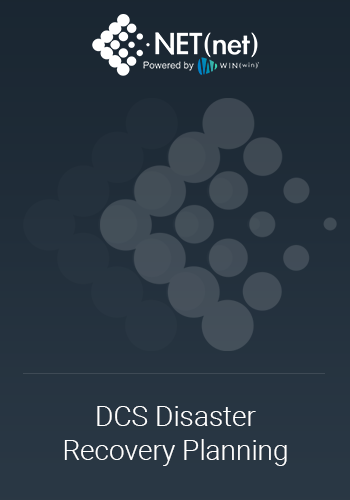Every IT leader reading this now is overspending 30% to 60% on at least one of their strategic suppliers. Unfortunately, many are overspending on several. How can we know this with such confidence? We’ve been seeing it now since 2002 and it’s the very reason we are thriving today. There are several factors that enable this culture of overspend to get traction inside organizations. Much of it is built on the good intentions of IT buyers simply working to execute their business plans with limited resources. Exacerbating the problem however, are the technology goliaths and their downstream ecosystems, who spend vast sums of money to ensure their customers pay a premium for their services.
The reality of the situation is, that the deck is really stacked against the IT buyer who ‘goes it alone’ in researching and negotiating their major IT agreements. With the pace of change around the world right now and the plethora of issues facing decision makers, the critical needs of the business come first, and often decisions are made simply to meet those immediate demands and put out the next fire.
The fact that you might be hastily signing away rights, losing long term agility, and overspending by 30%+ is overshadowed by the fact that you have cybersecurity issues, massive cloud migration plans, digital transformation mandates, new business initiatives, staffing and training issues, WFA (work from anywhere) support challenges , and that’s just to name a few.
A prime example we see every day is related to Cloud wherein companies are prioritizing the need to be on Cloud based infrastructure, over what they pay for it, or how they manage it. Thus the industry wastes many billions every year on sub-optimized Cloud.
So what is 'overspend culture'? It's the acceptance and normalization of sub optimized supplier agreements, that lead to poor outcomes and ultimately impede and undermine transformation efforts.
Below we outline just a few of the reasons why and how organizations might develop an 'overspend culture', which can lead to digital transformation efforts that struggle to accelerate or even get off the ground.
1 - You don’t know, what you don’t know.
Strategic supplier deals are typically triggered by one of these events:
- Agreement renewals or incremental purchases
- New business initiatives, new suppliers
- Merger and acquisition activities
- Audits from existing suppliers
Most IT and or procurement groups have their own methods and approach for negotiating pricing to get the best terms from suppliers. But when you start to really look at the options available to get actionable data to make informed decisions, the resources lose their luster quickly. Let’s break down some of the top ways most teams research and prepare for supplier events:
- Benchmarks and Reports: Benchmark and analyst reports have long been a way for teams to research what other organizations have paid, or should pay, for ‘like’ services. But the key with benchmarks is how they are created. Some of them base their information on backward looking aggregated data that gives you general averages. It's rare to find a benchmark or report generated by people who sit at a negotiating table, armed with real time data on a daily basis. How the data is measured, the context for it, and a hundred other data points can skewer benchmarking that is not bespoke for your company. And often, the very information these reports rely on comes from the suppliers themselves, which as this article alleges on one of these major consultancies, apparently conflict of interest abounds.
- Peer Groups: Peers can often be a great resource for all manner of advice and is often among the most trusted resources by executives. But the same holds true as with the first example, that if your peer is unknowingly overspending on a supplier, you are going to get bad guidance. For example. the financial industry notoriously overpays for technology. So when one banking executive asks another banking executive (who is already grossly overpaying), what they spend for a product or service offering, that's going to be a bad reference point.
- Experienced staff: In-house resources at larger, more experienced organizations are often quite deep within the procurement and IT teams. But even with that experience, if over the course of ten years for example, who would be in the better position to avoid overspend? A team that negotiates one Microsoft EA every three years, or a team that’s done hundreds of them across all industries and geographies in that same period of time? Medically, it's like when a superstar athlete tears a ligament. They don't have the general practitioner MD operate on them - they engage orthopedic specialist.
With a combination of the above, some will get an improved deal and arrive at a place where they feel comfortable. Our experience (and again, our very existence) tells us that most of these resources are just echo chambers repeating bad data from other sub-optimized deals.
2 - The Un-Official Technology Cartel
Did you know you’re fighting a cartel? Yes, there is an unofficial technology cartel, not organized like the ones you see on television crime shows, but a loosely affiliated group of industry insiders who all work together to ensure that you spend as much budget as can be allocated. Imagine for a moment any new business project that is going to entail new technology, and all the various resources that will need to be secured to help you execute on it. These supplier resources might include:
- Business Consultants
- Software/Hardware/Security Suppliers
- Systems Integrators
- Project Management
- Cloud Provider(s)
- Sub ecosystems and other costs
And as our Founder, Steven Zolman, explains in this video:
“As it turns out, this entire ecosystem of suppliers is all incented to sell you more technology, and so all the voices of consultation that you get, are all encouraging you to buy more. And there, our Clients sort of stand alone against that cartel.”
With each iteration of technology transformation, suppliers collude to add on more costs, which consume more resources and too often exceed all the intended savings. By the time anyone notices (if they ever do) the value was never realized, the world’s moved on to the next thing. The un-official cartel knows this, so it’s in their interest to perpetuate the system, not disrupt it. Suppliers are happy to play the long game here and wear you down. So, unless you’re prepared to disrupt the cartel and fight for value, transformation will always be on their terms, not yours.
3 - Sales 101
The salespeople at tech companies are trained to sell you today, more tomorrow, and everyday thereafter. They are highly incentivized to extract as much value from you as they can for as little as possible in return. They are literally paid to sell you products at the highest possible margins or as we've seen with cloud migrations, discount one product to force you into another whether you need it or not.
Its been estimated that sales training averages $2,236 per salesperson, per year. There is an entire sales training industry that makes its living off coaching the sales organizations of technology companies. Richardson Sales Performance group lists customer success stories on its website for both IBM and Microsoft, showing how their sales training led to a massive increase in performance for both. This is not to say that sales training is all bad, especially if it helps salespeople better relate to the needs of their customers. But in the end, sales comes down to hitting a revenue target, which equates downstream to personal quota and commission goals, and that ultimately drives behavior. Some additional context from a few annual reports:
- Oracle: Fiscal 2021, Sales and Marketing expenses accounted for almost 20% of revenue or $2B, up 8% YoY from 2020. Source.
- Microsoft: Fiscal 2020, Sales and Marketing accounted for 14% of revenue or $19.5B. As with Oracle, that represents an 8% increase YoY. Source.
- Salesforce: Fiscal year 2021 - $9.6B in marketing and sales or a whopping 45% of revenue. Source.
Unfortunately, just being aware of these facts is not enough. The best salespeople in the market are the ones that make you ‘think’ you got a great deal. You need a specialized team and the resources that can meet these skills head on and are paid to sit on your side of the table, armed with the tools and experience to counterbalance the vendors’ preparations and policies.
4. Transformative SSM
So, you’ve just signed a multiyear supplier deal worth several million dollars. What now? Shockingly, for many companies the answer is to throw it in a ‘digital’ drawer and forget about it. Forget about it until something happens that is, and by then it’s usually too late.
Proactive SSM (Strategic Supplier Management) is critical to secure value both short and long term with any supplier. Without it, organizations are left asking awkward questions when a supplier event like an audit, new purchases, renewals, and missed SLAs come up unexpectedly:
- Are we in compliance with our license terms?
- Has the supplier met every one of their SLAs?
- Is the business happy with the product/service?
- Have we realized our original business case/ROI?
- Did the supplier meet all the terms and conditions? Did we?
- Where is our Cloud spend going? Thought we were supposed to save money?
The great Cloud rush has made the need for SSM (Strategic Supplier Management) even more apparent, as the industry is set to waste $18B on cloud alone this year.
And it’s not always just about cost savings. A deal that is valued correctly with the right product mix, SLAs, and terms, can yield flexibility that propels the business forward in ways just saving a buck can’t. We call that transformative value optimization. But negotiating all the value in the world is wasted effort if you fail to monitor and measure performance of both the suppliers and their agreements (SSM).
Achieving digital transformation goals are made exponentially more difficult if you are hemorrhaging budget and value with the strategic suppliers you already have.
Summary
The good news? You can action all the above in your favor and avoid the cultural overspend by:
- Working with specialized, highly trained negotiators armed with real time, first-hand, supplier data, who are incented to work for you
- Understanding and disrupting the technology cartel by deciding not to ‘play the game’ by rules you didn’t make
- Practice SSM to ensure you are getting transformative optimized value from your supplier agreements, investments, and relationships
Turning wasted and underutilized IT spend into incremental budget that propels digital transformation is there to be captured. But only for those willing to admit they may have some overspend, and want to be a change agent.
As you enter budget planning season, let us help you farm your existing agreements to enable you to do more with every dollar you have. We can quickly assess any supplier situation to determine how best to favorably disrupt your own supply chain, and break the overspend culture. Contact us here.
About NET(net)
Founded in 2002, NET(net) is the world’s leading IT Investment Optimization firm, helping clients find, get and keep more economic and strategic value. With over 2,500 clients around the world in nearly all industries and geographies, and with the experience of over 25,000 field engagements with over 250 technology suppliers in XaaS, Cloud, Hardware, Software, Services, Healthcare, Outsourcing, Infrastructure, Telecommunications, and other areas of IT spend, resulting in incremental client captured value in excess of $250 billion since 2002. NET(net) has the expertise you need, the experience you want, and the performance you demand. Contact us today at info@netnetweb.com, visit us online at www.netnetweb.com, or call us at +1-866-2-NET-net to see if we can help you capture more value in your IT investments, agreements, and relationships.
NET(net)’s Website/Blogs/Articles and other content is subject to NET(net)’s legal terms offered for general information purposes only, and while NET(net) may offer views and opinions regarding the subject matter, such views and opinions are not intended to malign or disparage any other company or other individual or group.

